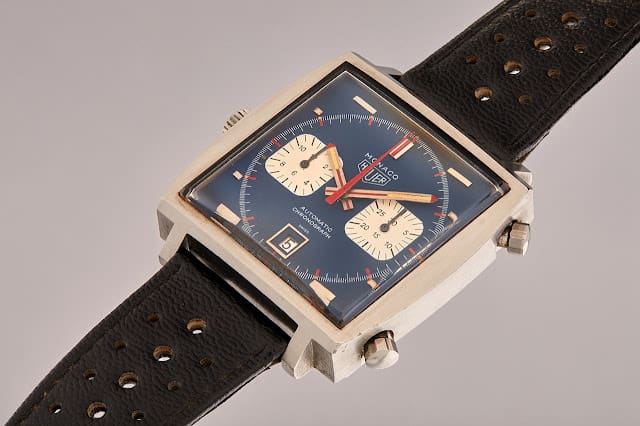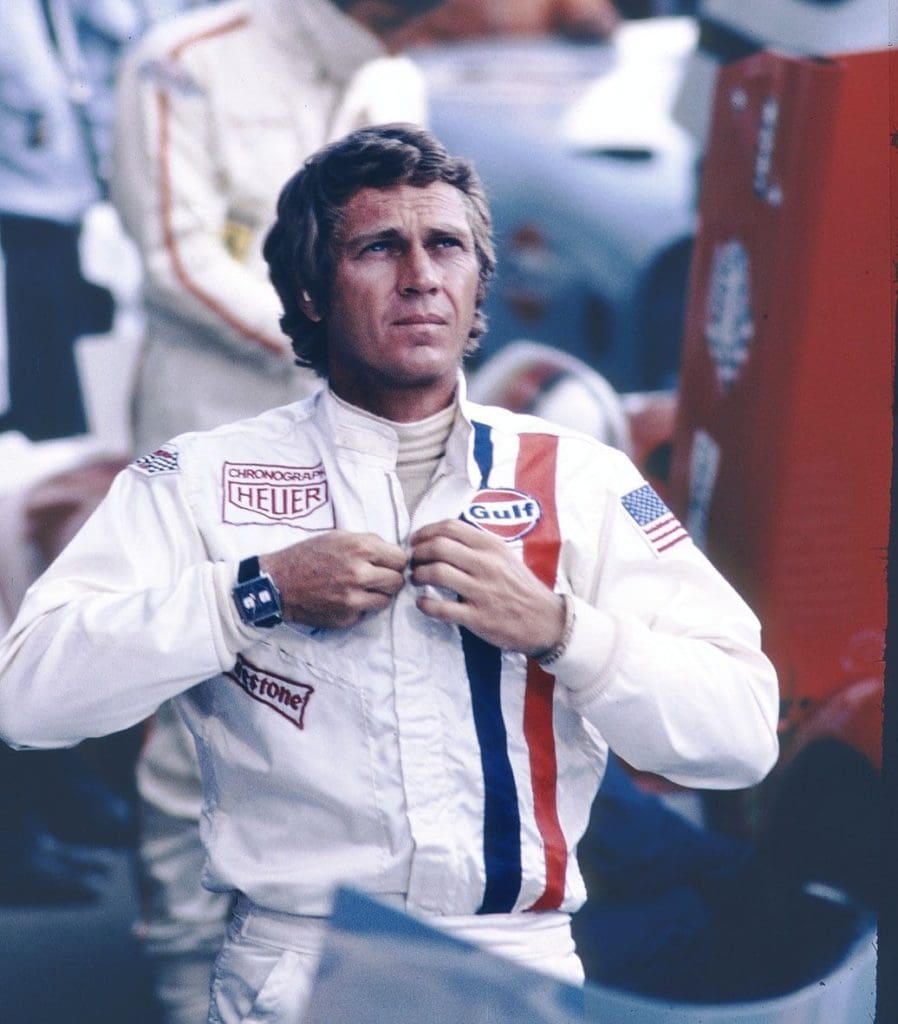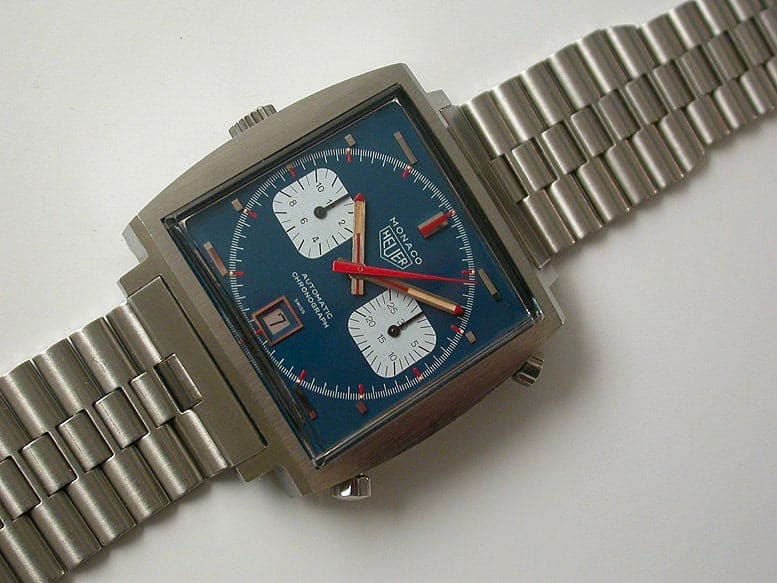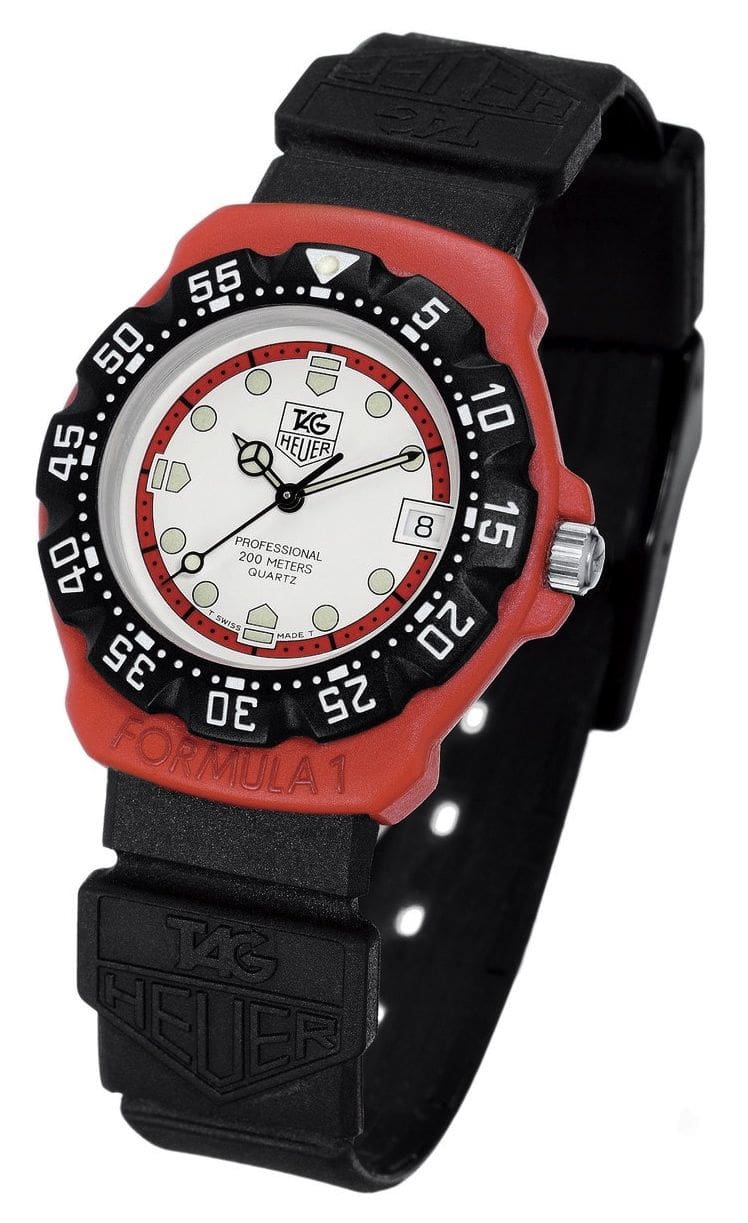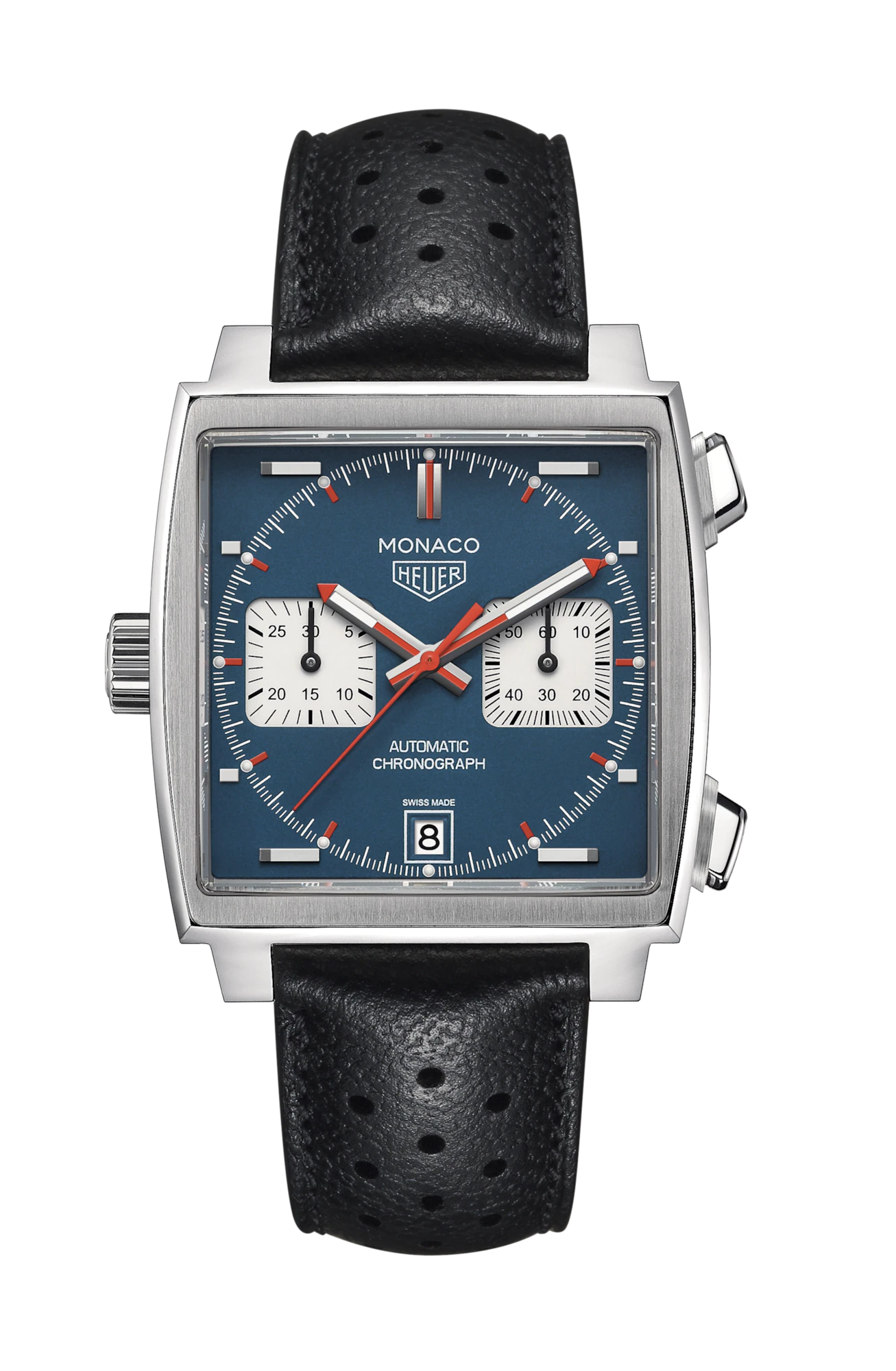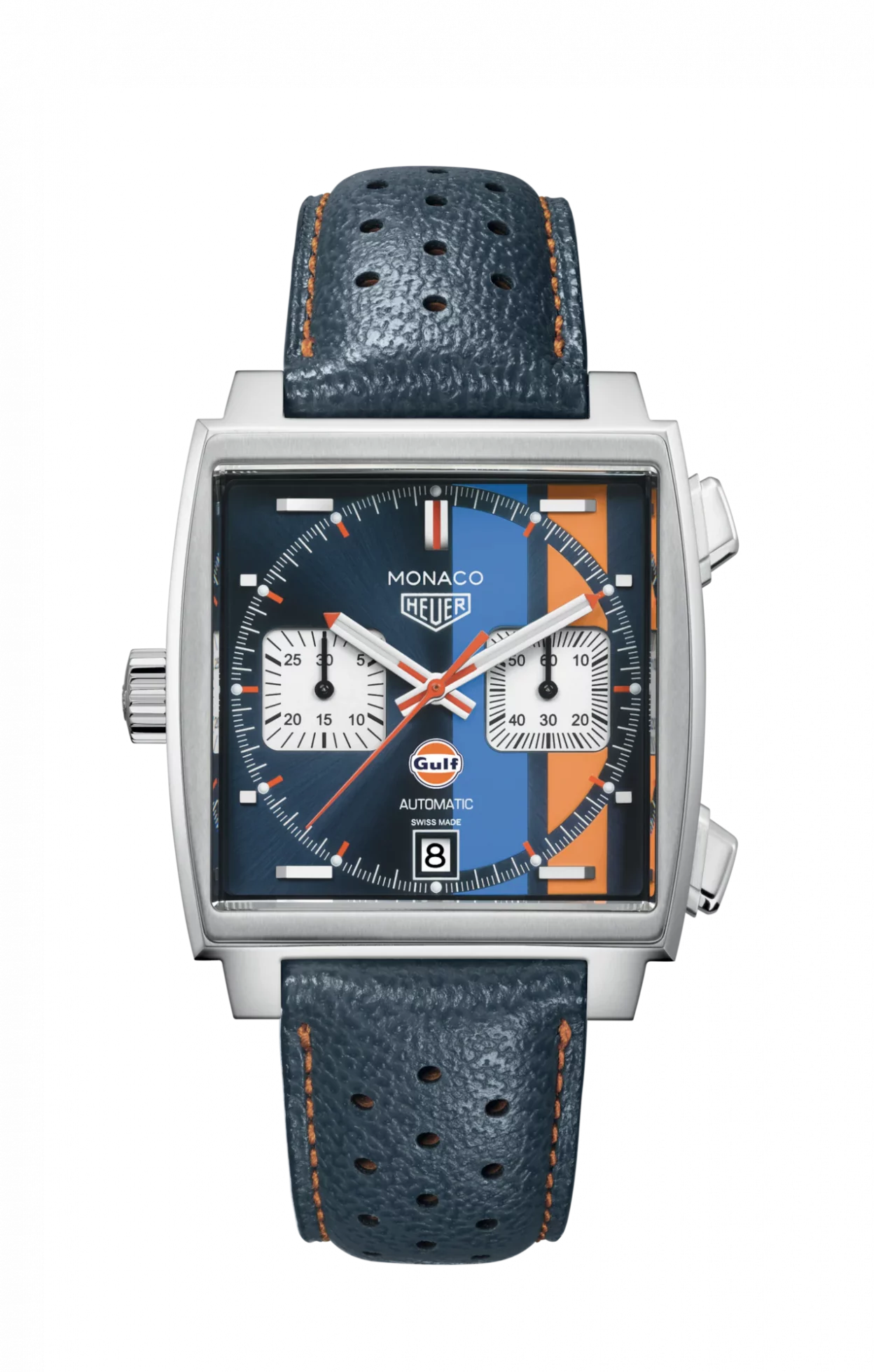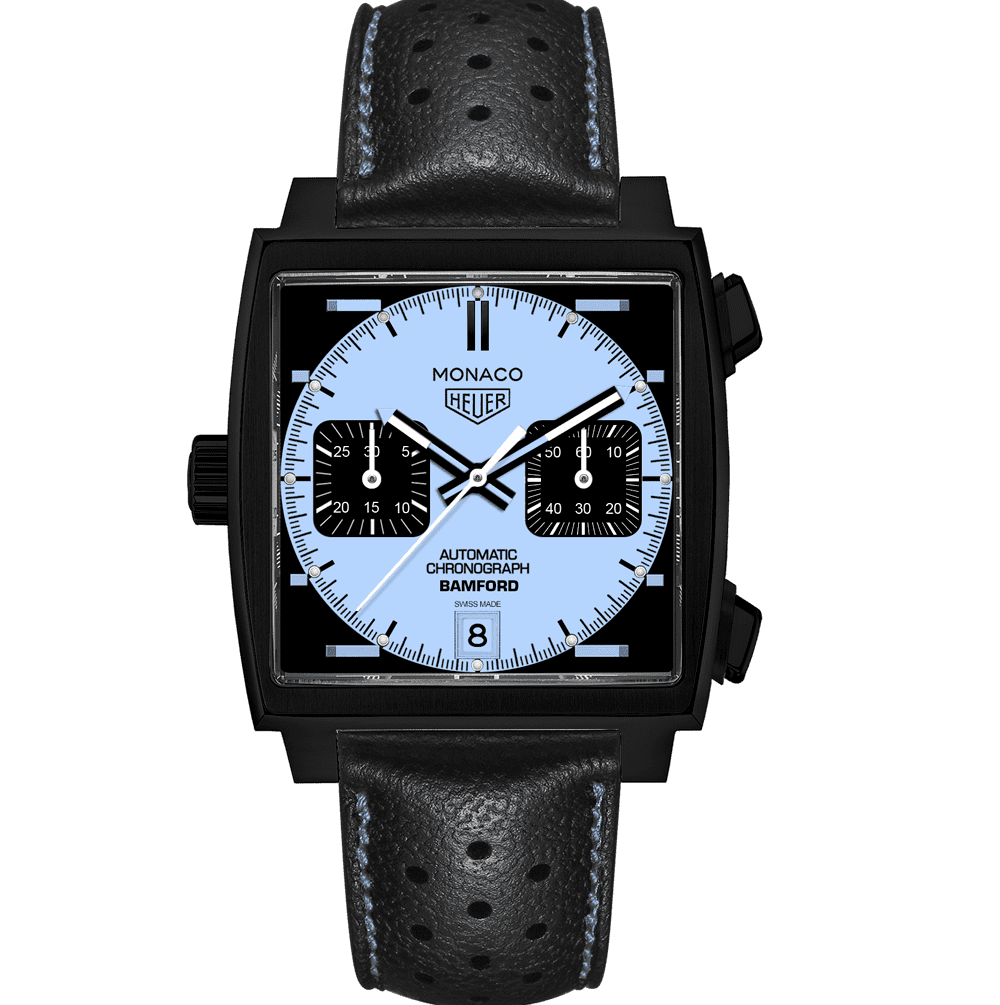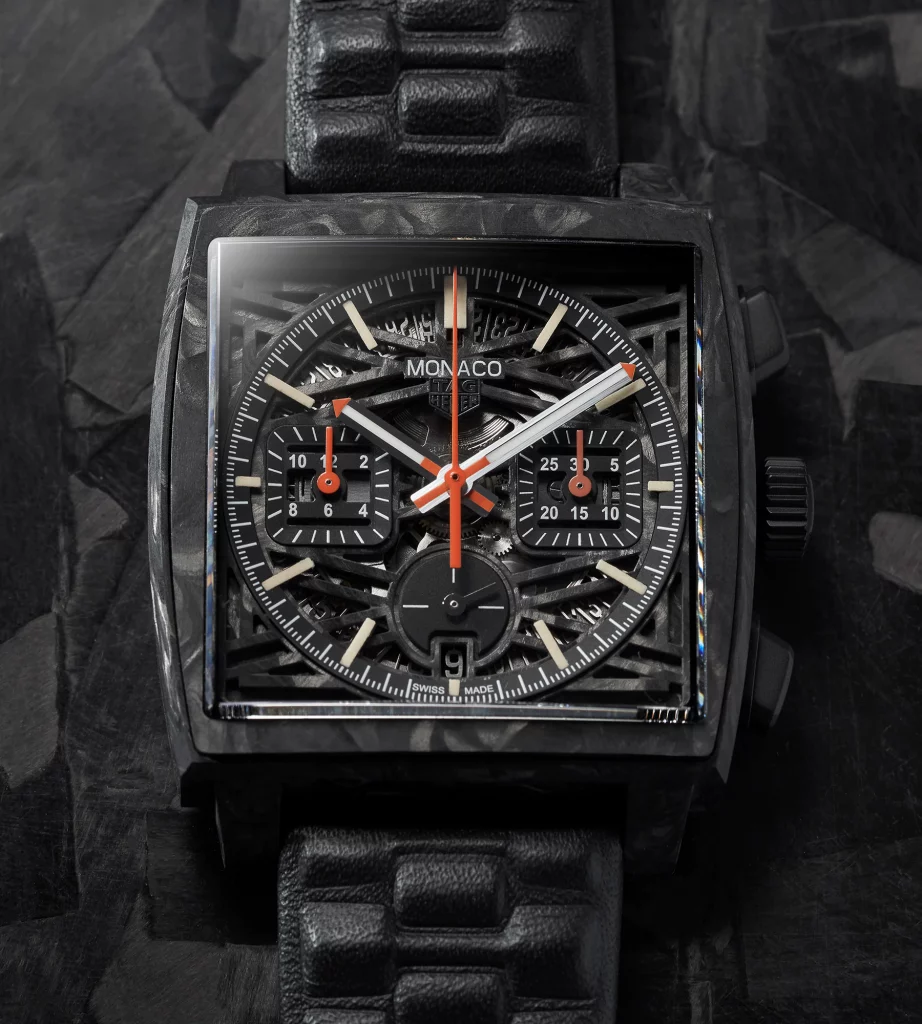Why the Heuer Monaco is still the watch world’s ultimate square deal
D.C. HannayWelcome to The Icons, a new series where we take a horological deep dive into the most legendary watches of all time. We’ll delve into the story behind the watch, its evolution over the years, famous (and infamous) wearers, the classic references, and the contemporary versions you should be checking out.
Speed and precision. Engineering and craftsmanship. There’s no sport that offers the visceral thrills of motor racing, and no timepiece is more purpose-built for speed than the chronograph. And among iconic racing chronographs, including the Rolex Daytona and the Omega Speedmaster (before it went to the Moon), the one I see with the most direct connection to motorsport is the Heuer Monaco.
Early history
1969 was a watershed year for the chronograph watch. With the Quartz Crisis knocking on the door of the Swiss watch industry, that year saw the introduction of the automatic chronograph movement, with Seiko’s 6139, Zenith’s El Primero, and the Calibre 11 (a joint project with Heuer, Hamilton/Buren, Dubois-Depraz, and Breitling) all making their debuts. And in an effort to make a bigger splash, Heuer endeavored to set themselves apart by putting the Calibre 11 into a 39 mm water-resistant square case, distinguishing their entry from its more conventionally round-cased competition. The bold blue dial was highlighted by squared white chrono subdials, and punctuated with hands and markers violently slashed in red. It looked like nothing else out there. Thus, the Monaco (named after the Monaco Grand Prix race), was thrust into the spotlight, borne from a cloud of tire smoke and vaporized petrol.
The Monaco’s most recognizable feature, that iconic case shape, presented some real technical puzzles to solve, most notably, waterproofing a square-cased chronograph. Sure, square-cased watches had come before, but making those case shapes water-resistant, with the additional challenge of the chronograph pushers proved to be a real feat, but Heuer managed to enlist some outside help with the design. They also gained some real credibility in the racing community via the first Heuer brand ambassador, Formula 1 driver Jo Siffert, who famously wore the Autavia model. And not long after coming on board, Siffert was tapped to serve as a technical advisor for the landmark Le Mans film, starring Steve McQueen, and thus a legend was born.
Rise to fame
Already a household name from starring roles in The Magnificent Seven, The Great Escape, Bullitt, and The Thomas Crown Affair, McQueen was also a serious race driver, and his passion was poured into his 1971 film, which was shot in part during the 1971 24 Hours of Le Mans. McQueen wore the Monaco 1133B throughout filming, thus cementing that reference’s exalted place in the eyes of collectors since.
Despite the star power associated with the Monaco, its success wasn’t built to last. By the mid-70s, due to changing tastes and the dominance of quartz watches in the marketplace, the model disappeared from Heuer’s catalogue. Heuer gradually lost their mojo, and were in somewhat dire straits when they were bought out by Techniques d’Avant Garde in 1986, thus birthing the TAG Heuer moniker. The company began an aggressive marketing direction, and enlisted the racing drivers of the day to introduce new quartz-based lines, like the colorful composite-cased Formula 1, and the S/el (Sports Elegance), endorsed by Brazilian F1 legend Ayrton Senna. The newly-formed TAG Heuer saw great success in the go-go ’80s, due to their forward-leaning designs, but alas, much of Heuer’s heritage seemed destined for the dustbin of history.
The ensuing years saw much of TAG Heuer’s product line growing bigger, bulkier, and, some might argue, blander, but the rise of collectors’ interest in the historic models of the past was just around the corner. The McQueen legend grew exponentially after his death in 1980, and the Monaco’s cachet along with it. After laying dormant for years, TAG Heuer finally relaunched the Monaco in 1997, and while not an exact reissue of the vintage reference, the old Heuer logo was resurrected in tribute. The vintage watch renaissance was on the rise, and the CS2110 was the first in the modern Monaco lineup. Subsequent models followed, hewing closer to the classic originals with every subsequent release, including a return to the original horizontal dial markers and left-hand crown. TAG Heuer has released some stunning limited editions along the way, and they’re well worth seeking out.
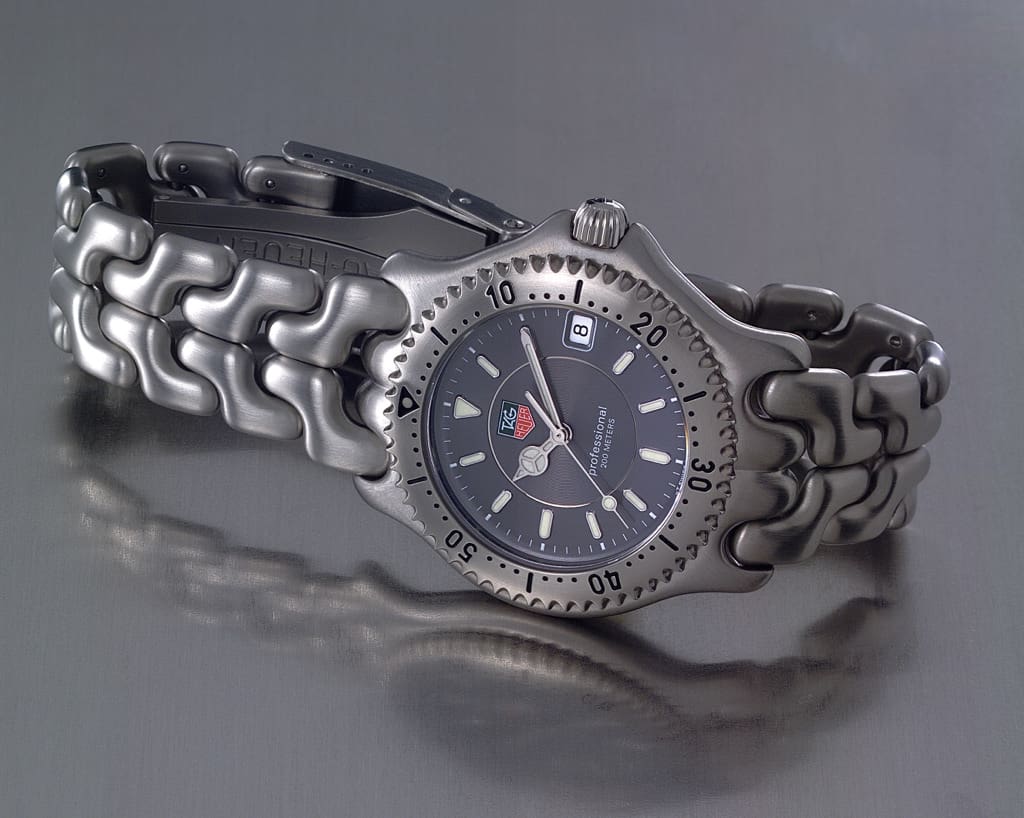
Famous wearers
Besides McQueen himself, the Monaco has gained quite a number of more contemporary well-known fans. Actor Patrick Dempsey (a fine racer himself) is a Monaco aficionado, with several references in his collection. Bryan Cranston famously wore one as Walter White’s alter ego, Heisenberg, in his turn as the antihero of Breaking Bad. And a triumvirate of superheroes from the Marvel cinematic universe are fans, with Chris Hemsworth (Thor), Jeremy Renner (Hawkeye), and Tom Holland (Spiderman) all rocking the Monaco.
I’ve had the privilege of wearing several primo variants of the Monaco at RedBar meetups, and they do indeed live up to the hype. If you’re looking to add a Monaco to your collection, here are a few of my favourite picks from the modern era.
Favourite models
First off, the O.G.: The Ref. # CAW211P.FC6356 is the modern iteration of the infamous McQueen model. It’s got all the classic design cues, including the blue/white dial with red accents, the left-hand crown, the horizontal applied indices, but it adds a modern sapphire caseback with the current Calibre 11 movement on view. It wears a vintage-style black perforated leather racing strap, and is really the one Monaco to get if you only get one.
Next is one of the coolest limited editions in the lineup, and you might have a tough time tracking one down: The Special Edition Monaco X Gulf, complete with the iconic blue and orange racing livery of one of the most famous race teams in motoring history. The beautiful blue sunray dial features the Gulf logo above 6, and a pair of racing stripes streaking down the right side of the dial. A blue leather strap with orange stitching completes the look.
And here’s where things take a dark, dangerous turn. The ever-mischievous (and former outlaw) watch customiser George Bamford now has TAG Heuer (along with Zenith and Bulgari) as part of his LVMH manufacture-approved sandbox. Infamous for his blacked-out creations, he’s brought his unique touch to the Monaco, and to quote Spinal Tap, with Bamford there’s “none more black”. Not since the diabolical ‘Dark Lord’ version of the mid-70s have we seen a Monaco quite like it, but where that model had day-glo orange accents, Bamford’s interpretation runs cool in his signature bright blue. And if you’re not a fan of the blue, don’t worry: You can customize the Monaco to your own tastes right on the Bamford site. I made my own military-esque render with olive-colored dial elements that looked the business. You can even create your own interpretation of the Dark Lord, if that’s your thing.
And finally for a bit of FOMO Unobtanium: The Monaco piece unique created for the Only Watch 2021 charity auction smashed estimates by hammering for an eye-watering CHF 290,000, but some lucky bidder got a supremely cool bespoke piece for their money. Full carbon case, an openworked dial with plenty of hand finishing on the movement componentry, and bright orange accents that recall the Dark Lord variant, it’s a high-tech wonder that’s dressed to kill. You can’t buy it, but you can drool right here.
As you can see, the Heuer Monaco certainly lives up to the Icons title. With its groundbreaking design, genuine racing history, and timeless good looks, the Monaco would make any enthusiast proud to add it to their collection.




